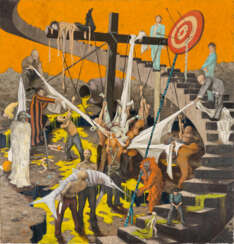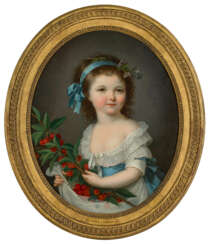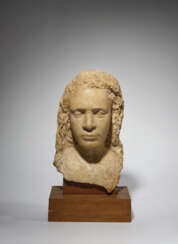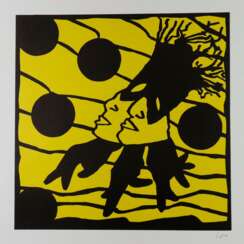e. jonas
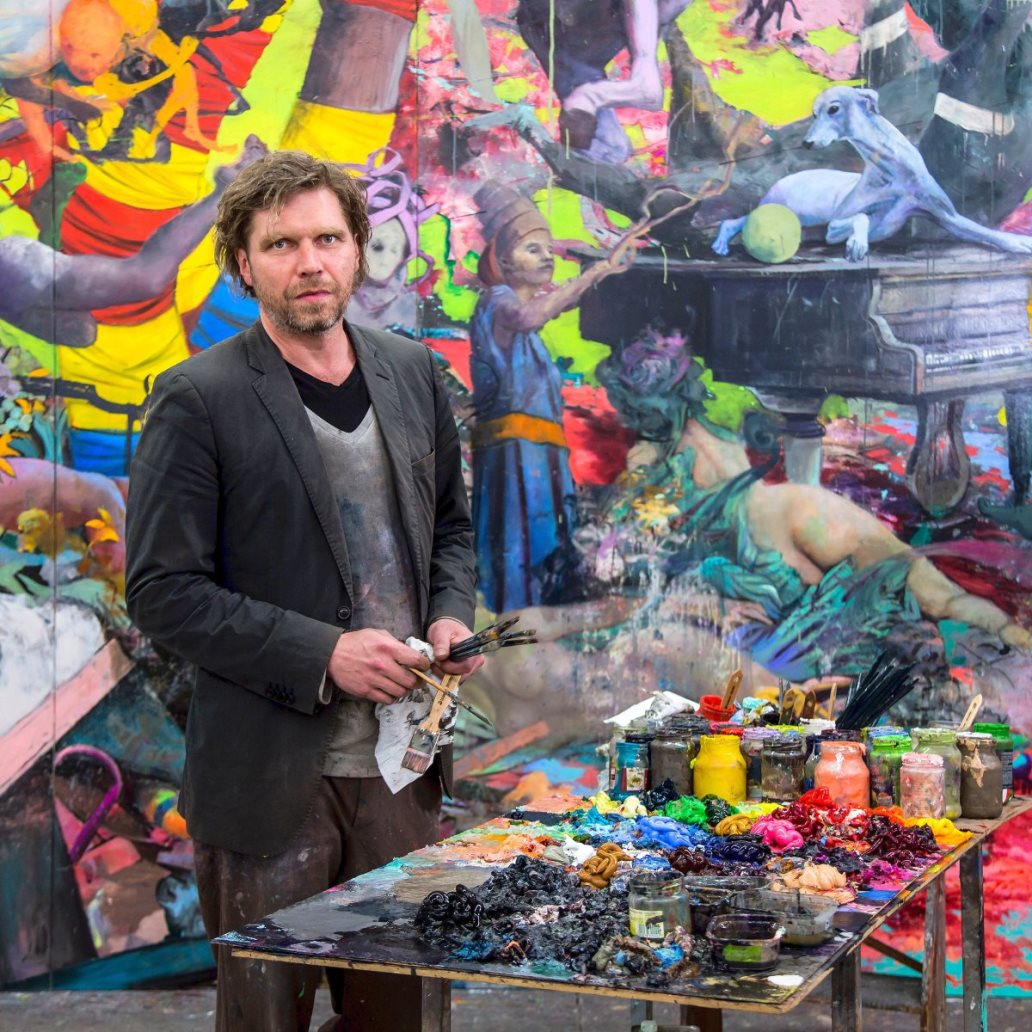
Jonas Burgert is a German figurative artist living and working in Berlin.
Jonas Burgert graduated from the Academy of Fine Arts in Berlin and studied as a graduate student (Meisterschueler) under Prof. Dieter Hacker in Berlin, and his work has been characterized from the very beginning by its vivid originality.
Burgert's paintings are filled with fantastic figures of the most unimaginable proportions. In the spaces of his panoramic paintings, one is immersed in a visual chaos of narrative layers, amidst mysterious events, strange figures and creatures. Jonas Burgert's large-format paintings are dominated by the grotesque, the bizarre and the surreal. Nightmarish zombie-like figures invade his pictorial worlds, frightening and appealing at the same time.
Since 1998 his work has been featured in numerous group exhibitions around the world, Jonas Burgert is now very successful and his works are very willingly acquired by many galleries.


Jonas Burgert is a German figurative artist living and working in Berlin.
Jonas Burgert graduated from the Academy of Fine Arts in Berlin and studied as a graduate student (Meisterschueler) under Prof. Dieter Hacker in Berlin, and his work has been characterized from the very beginning by its vivid originality.
Burgert's paintings are filled with fantastic figures of the most unimaginable proportions. In the spaces of his panoramic paintings, one is immersed in a visual chaos of narrative layers, amidst mysterious events, strange figures and creatures. Jonas Burgert's large-format paintings are dominated by the grotesque, the bizarre and the surreal. Nightmarish zombie-like figures invade his pictorial worlds, frightening and appealing at the same time.
Since 1998 his work has been featured in numerous group exhibitions around the world, Jonas Burgert is now very successful and his works are very willingly acquired by many galleries.


Paul Gauguin, a French artist born in Paris in 1848, is renowned for his significant contributions to Post-Impressionism, Primitivism, and Synthetism. Gauguin's art is distinguished by his experimental use of color and style, which set him apart from the traditional Impressionist movement.
Gauguin's early life was marked by a period in Peru, which influenced his artistic perspective. Initially, he pursued a career in stockbroking but soon turned to art, driven by financial necessity and a growing passion. His artistic journey began under the mentorship of Impressionist artist Camille Pissarro and through exposure to the works of other avant-garde artists.
The hallmark of Gauguin's work is his exploration of non-Western cultures, particularly during his time in Tahiti and the Marquesas Islands. This period saw the creation of some of his most famous works, including "Where Do We Come From? What Are We? Where Are We Going?" His paintings from this era, characterized by vivid colors and Symbolist themes, reflect a fusion of cultural influences and his quest for a "primitive" expression of spiritual and emotional states.
Despite his innovative style, Gauguin struggled with financial difficulties and health issues throughout his life. His work received little recognition during his lifetime, but posthumously, he gained acclaim for influencing modern artists like Pablo Picasso and Henri Matisse.
Today, Gauguin's works are celebrated in galleries and museums worldwide for their unique blend of cultural influences and artistic innovation. His enduring legacy is a testament to his unique vision and the profound impact he had on the art world.
Collectors and experts in art and antiques, stay updated on new product sales and auction events related to Paul Gauguin. Sign up now for exclusive updates and immerse yourself in the world of this visionary artist.


Johann George Hossauer was a German jewelry artist, entrepreneur and inventor.
Hossauer began working at the bronze factory of Werner & Mietke in Berlin and trained under the jeweler Henri de Ruolz. In 1819, King Friedrich Wilhelm III of Prussia financially supported the factory, which was managed by Hossauer. This factory produced articles of platinum, gold, silver, bronze, gilded and silvered copper and employed up to 100 people. At one of the first trade exhibitions in Berlin, the master received a gold medal for his work, and in 1826 the king granted him the title of jeweler of His Majesty the King.
As a prominent Berlin jeweler, Hossauer executed several orders of the Prussian court, including the Pour Le Merite and the Order of St. John, and also participated in the creation of the Russian Order of St. Vladimir and the Hanoverian House Order of St. George. He created silver table sets for Prussian princes and fulfilled other prestigious orders, produced jewelry, medals, and numerous pieces of gold and silverware.
In 1845, Hossauer sold his patent for the electroplating process to Werner von Siemens, and ten years later he was appointed a judge at the World's Fair in Paris.

